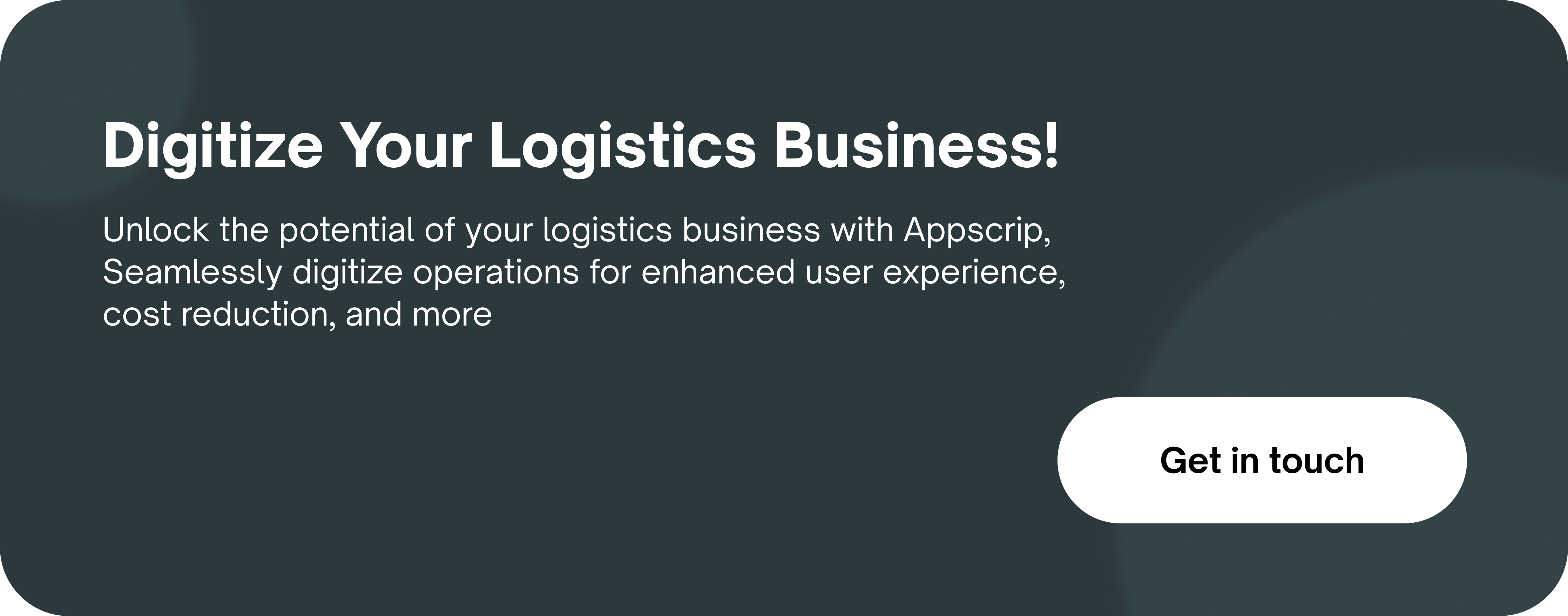Fleet Management applications are a game-changer in the business world. By monitoring everything from vehicle diagnostics and geolocation to driver behavior, this state-of-the-art software helps businesses boost efficiency, ensure safety, comply with regulations, and minimize costs.
Efficient fleet management is the cornerstone of success for businesses operating in sectors that rely on transportation, such as logistics, delivery, construction, and service industries. A well-managed fleet can lead to reduced operational costs, enhanced asset utilization, timely deliveries, improved customer service, and minimize risks.

Understanding the Need for Fleet Management Apps
The traditional methods of managing fleets often involve manual paperwork, communication gaps, and guesswork. This can result in inefficiencies, delays, increased fuel consumption, and higher maintenance costs. Fleet management apps address these challenges by providing a comprehensive solution that offers real-time insights, data-driven decision-making, and seamless communication.
Challenges faced while using traditional Fleet Management methods
Businesses often grapple with challenges such as route inefficiencies, vehicle breakdowns, inaccurate ETAs, unauthorized vehicle use, and poor driver performance. These issues can lead to increased operational costs and compromised customer satisfaction.
Benefits of using App-based Fleet Management solutions
Integrating technology-driven solutions, such as fleet management apps, can yield a multitude of benefits. These include:
- Real-time GPS Tracking and Mapping: Fleet management apps offer real-time tracking of vehicles, enabling businesses to monitor their location, speed, and status. Accurate mapping ensures better navigation and timely deliveries.
- Vehicle Health Monitoring: These apps enable remote monitoring of vehicle health, including engine diagnostics, maintenance schedules, and potential issues. This proactive approach helps prevent breakdowns and reduces downtime.
- Route Optimisation and Navigation: Fleet management apps utilize algorithms to calculate the most efficient routes, considering factors like traffic, weather, and road conditions. This reduces fuel consumption and enhances on-time performance.
- Driver Management and Performance: Apps facilitate driver performance monitoring through metrics like driving behavior, adherence to routes, and idle times. This data promotes safer driving practices and boosts overall efficiency.
- Fuel Management and Cost Control: Technology-driven solutions provide insights into fuel consumption patterns, allowing businesses to identify inefficiencies and implement strategies for cost reduction.
Factors influencing Fleet Management Application cost
The cost of fleet management app is influenced by multiple factors. Here is a detailed breakdown of the primary cost determinants.
The complexity of the Software: The complexity of the software significantly affects the cost. A basic software solution with simple features such as a dashboard to monitor vehicles might range from $8,000 to $15,000. However, complex systems that include advanced features like real-time tracking, fuel management, route planning, maintenance scheduling, and regulatory compliance can cost upwards of $20,000.
Features Included: The type and number of features included in the software also play a crucial role in determining the cost. Basic features like GPS tracking and route planning tend to be more affordable, while more advanced features like predictive maintenance, driver behavior monitoring, and analytics capabilities can drive up the cost.
Technology Stack: The technology used to build the software can also influence the price. Advanced technologies like Artificial Intelligence (AI), Machine Learning (ML), and the Internet of Things (IoT) can significantly increase the development cost.
Location and Development Team Size: The cost of software development varies significantly based on the location of the development team and the size of the team. For instance, hiring a development team in North America might be more expensive than outsourcing the development to regions like Eastern Europe or Asia.
Equipment and Integration Costs: The cost can also escalate if there’s a need for additional equipment or hardware for the software to function optimally. Also, if the software needs to be integrated with existing systems or software in the organization, it could further increase the cost.
Key Features of a Robust Fleet Management App
Here are the key features that make a fleet management app robust and efficient:
- Real-Time Tracking: Real-time tracking like Uber is the backbone of any good fleet management app. This feature allows businesses to track their vehicles in real-time, ensuring that they’re on the right path and adhering to their schedules. It can also help identify any potential issues, like traffic delays or vehicle breakdowns before they become significant problems.
- Maintenance Alerts: A high-quality fleet management app will also include maintenance alerts. These alerts can notify the fleet manager when a vehicle requires maintenance, based on factors like mileage and time since the last service. This can help prevent breakdowns and costly repairs.
- Driver Behavior Monitoring: Monitoring driver behavior is crucial for safety and efficiency. This feature can track factors like speed, harsh braking, rapid acceleration, and seatbelt usage. It can then provide feedback to drivers, helping them improve their driving habits and reduce the risk of accidents.
- Reports and Analytics: Comprehensive reports and analytics can help businesses make informed decisions. These reports can provide insights into factors like overall fleet performance, driver productivity, vehicle utilization, and cost per mile.
- Integration Capabilities: Finally, a robust fleet management app should be able to integrate with other systems, such as ERP or HR systems. This allows for seamless data transfer between different systems, improving efficiency and accuracy.

Steps to Building a Fleet Management App
The process of building a Fleet Management App involves a series of steps, each playing a crucial role in the overall success of the app.
Market Research and Analysis: The first step is to carry out comprehensive market research and analysis. This includes identifying your target audience, understanding their needs and preferences, analyzing the competition, and identifying trends in the fleet management market. It’s crucial to understand what features are expected from a fleet management app and what unique value your app can provide to stand out from the competition.
Defining App Features and Functionalities: Once you have a clear understanding of the market, the next step is to define the features and functionalities of the app. These should be based on the needs of your target audience and the gaps in the market identified during your research. Features might include vehicle tracking, fuel management, maintenance scheduling, and driver management. Remember to prioritize building features that provide the most value to your users.
UI/UX Design: The design of the app plays a crucial role in the user experience. The UI (User Interface) design focuses on the visual aspects of the app, ensuring it is aesthetically pleasing and easy to navigate. The UX (User Experience) design focuses on the functionality and usability of the app, ensuring it meets the users’ needs and expectations. Both UI and UX design should be user-centric and intuitive to provide a seamless user experience.
Backend Development and Database Setup: This involves setting up the server, database, and APIs. The backend development ensures the app functions correctly, while the database is where all the data (like user information, vehicle data, etc.) is stored. This step also involves setting up APIs that allow the app to interact with other software or hardware components, like GPS for vehicle tracking.
Integration of APIs and Third-party Services: To enhance the functionality of your app, you may need to integrate APIs and third-party services. For instance, integrating a GPS API for real-time tracking, a payment gateway for easy transactions, or a third-party service for push notifications. This step is crucial for ensuring that your app provides all the necessary functionalities.
Testing and Quality Assurance: Before launching the app, it’s essential to conduct rigorous testing to identify and fix any bugs or issues. This includes functionality testing, usability testing, performance testing, and security testing. Quality assurance ensures that the app meets the required quality standards and provides a seamless user experience.
Launch and Continuous Improvement: Once the app has been tested and is ready, it’s time to launch it in the app market. However, the work doesn’t stop here. It’s important to continuously monitor the app’s performance, gather user feedback, and make improvements based on this feedback. Regular updates and improvements will help keep your app relevant and competitive in the market.
Conclusion
Selecting the right fleet management software requires careful consideration. You need to scrutinize factors such as ease of use, real-time tracking functionality, maintenance scheduling, fuel management, driver safety features, and integration capabilities.
At Appscrip, we understand the complexities and unique challenges of fleet management. Our deep industry expertise enables us to deliver a powerful, user-friendly fleet management application platform that ticks all the right boxes. Don’t just manage your fleet, optimize it with Appscrip.










